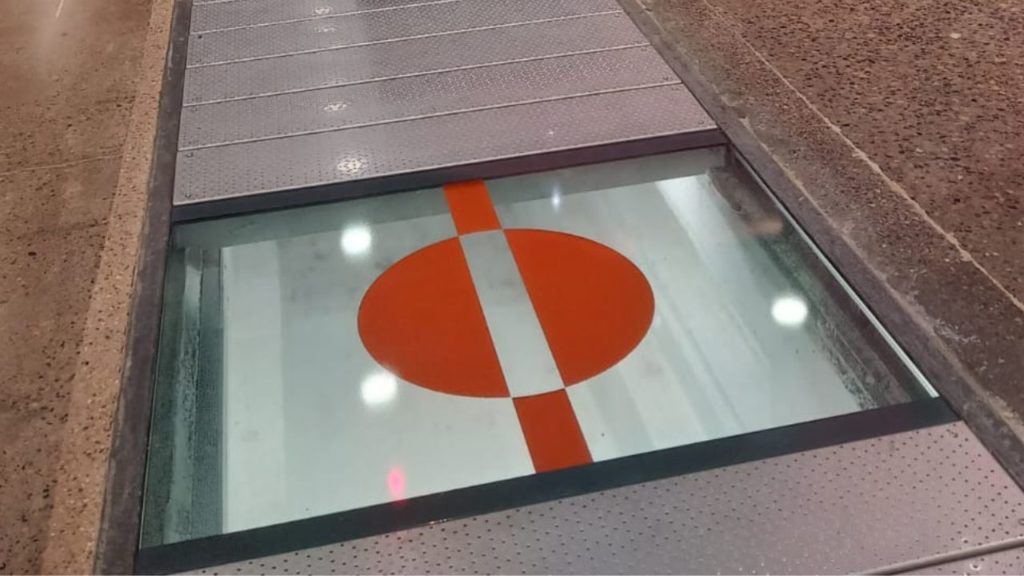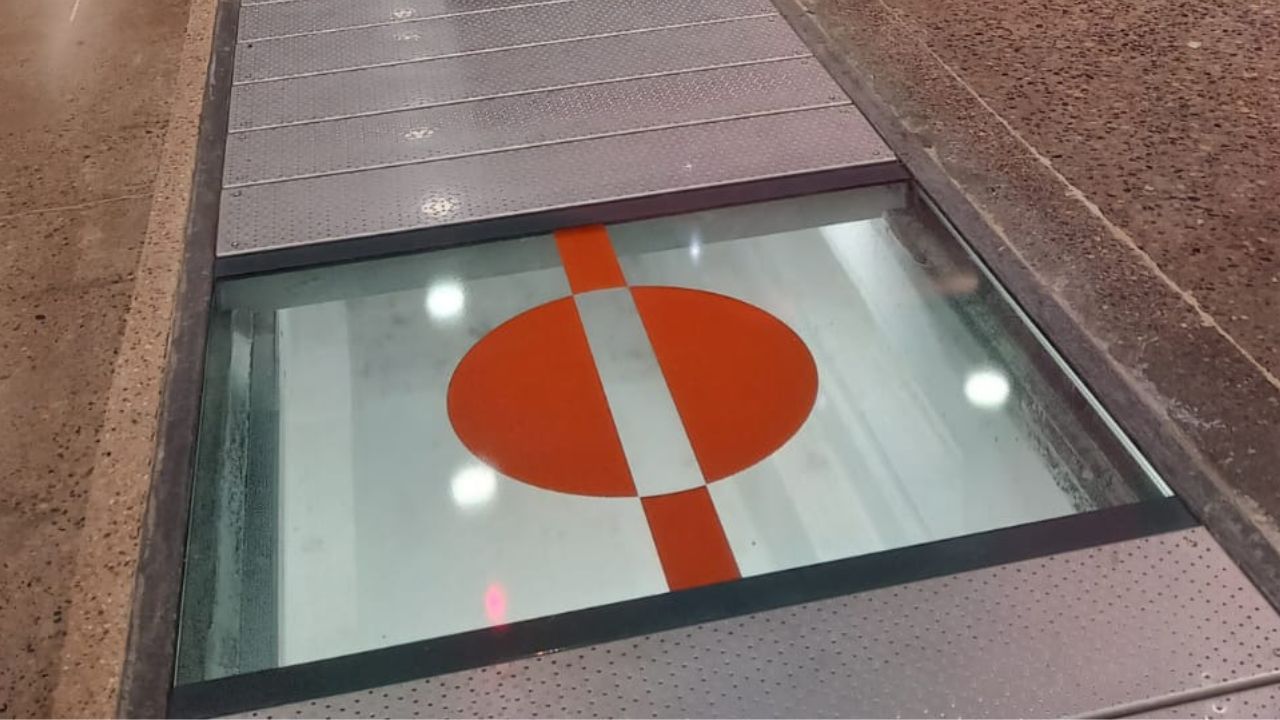In commercial buildings, there is a fine balance between making the building safe and including aesthetically pleasing features which can attract potential customers and promote a professional brand image.
With recent increases in online interest in ‘glass floor’ (22%) and ‘glass walkways’ (21%)¹ , architects and construction professionals are looking for new ways to incorporate glass in commercial property design.
Using anti-slip glass is a great option to mitigate safety worries while maintaining a sleek and seamless design. Whether you are considering a section of glass flooring or a glass staircase, here is our ultimate guide to the benefits of anti-slip glass and how it can be applied to modern building design.
What is anti-slip glass?
Untreated glass can be extremely slippery, especially when wet, with a smooth surface and minimal grip – making it a dangerous flooring choice.
In contrast, anti-slip glass is treated to have a higher friction surface to lessen the chances of slip injuries when a person walks over it. The specific slip resistance will depend on the specific glass you choose; however, it will be significantly higher than that of traditional toughened glass.
Glass flooring is often combined with toughened laminated glass units, which consist of two panes of glass held together by a strong interlayer of PVB plastic, making it more resistant to damage and breakages.
Anti-slip glass properties provide an alternative flooring option, giving a greater space illusion than tiles or wood flooring.
The benefits of Punto anti-slip glass
At SGP, we are proud to offer Madras Punto anti-slip glass. This specialist glass product has been chemically etched on one side to form a texture with rough relief points at the top.
The surrounding glass is transparent and shiny, allowing light through below where foot traffic will reach. The vision is screened from below, allowing viewers to see just an outline of those walking above.
Anti-slip glass can be polished and CNC-shaped to any custom size and design for various applications and different types of buildings. The Specialist Glass team can prepare flat glass units up to 6000mm x 3210mm in size and can create consistent designs for multiple identical units.
Uses of anti-slip glass for commercial buildings
One of the most popular applications of anti-slip glass is glass flooring, which can be applied to external balconies or walkways to brighten up the space. For commercial applications that thrive from natural light to showcase the wares, such as art galleries or furniture showrooms, glass flooring is a great option.
Anti-slip glass can also be used in glass staircase design, perfect for entranceways in an office building, leisure centre, or library. Each step could be built with anti-slip glass to create a secure footing when going up or down, and this can be complemented with a glass balustrade on either side of the stairs to maximise the amount of natural light.
Anti-slip glass can also be applied to accessible features like wheelchair ramps or glass-bottom lifts that help maintain a seamless design. Including well-designed accessibility points will welcome a broader range of potential customers in hospitality or retail environments or attract a larger talent base in an office building. Accessible features and layouts can also increase a property’s value in both commercial and residential settings.
The benefits of anti-slip glass for commercial buildings
Construction and architectural professionals aim to create a high-value building, and safety is one of the main considerations for potential buyers. Including high-quality safety glass like Punto for high-traffic areas offers peace of mind, helps business owners align with safety regulations and avoids potential injury disputes.
In addition, strategically placing glass flooring or walkways in the building can increase the amount of natural light in the building, which is helpful for darker spaces away from windows. Creating a brighter space can also support a positive customer and employee experience, which is particularly helpful for large indoor shopping centres.
For office spaces, an increase in natural light is proven to enhance efficiency and overall happiness, so glass flooring (along with other glass features) can help to create a productive work environment.
Most importantly, at a time when energy prices are sky high, using glass throughout a building can help reduce reliance on electric lights, reducing energy bills and carbon emissions. When combined with other features such as glass balustrades, balconies, or glass skylights, glass can support the overall sustainability of the infrastructure while contributing to the UK’s 2050 Net Zero target.
Anti-slip glass project: York Railway Museum
Recently, our team was thrilled to supply Harrogate Steel with anti-slip glass units for the York Railway Museum.

The combination of toughened laminated glass and anti-slip properties will increase the longevity of the feature and minimise any safety risks. The glass flooring also adds an intriguing element to the attraction, with a red railway sign etched to make it stand out.
How can SGP help you?
If you want to enhance your next project with glass flooring, contact our friendly team to discuss how we can support you in enhancing the safety of your design.
We can discuss the size and shape of your preferred units and the timescales of your overall project and endeavour to meet your exact requirements.
At SGP, we proudly offer a wide range of specialist glass, from laminated and toughened units to curved and jumbo glass. For glass design inspiration, follow us on Twitter, Facebook, Instagram, and LinkedIn.
Sources:
- (Google Trends December 2022 to January 2023)




